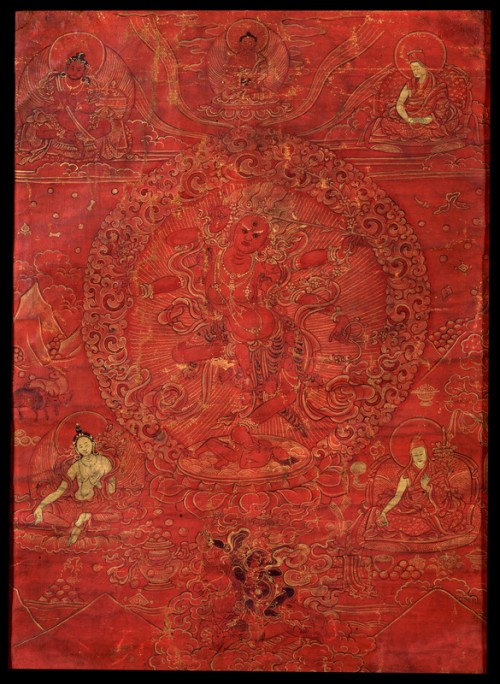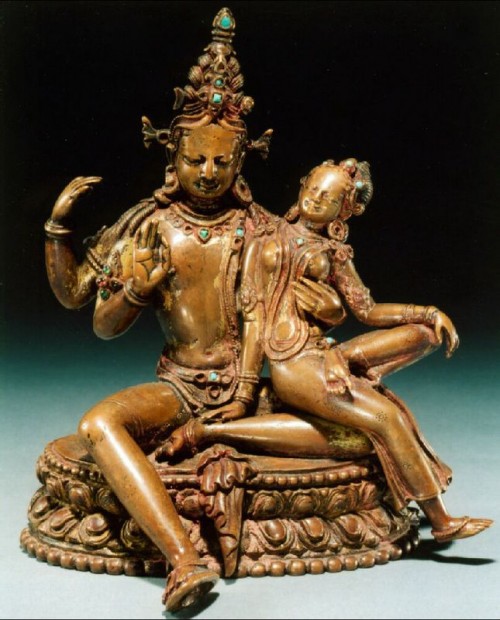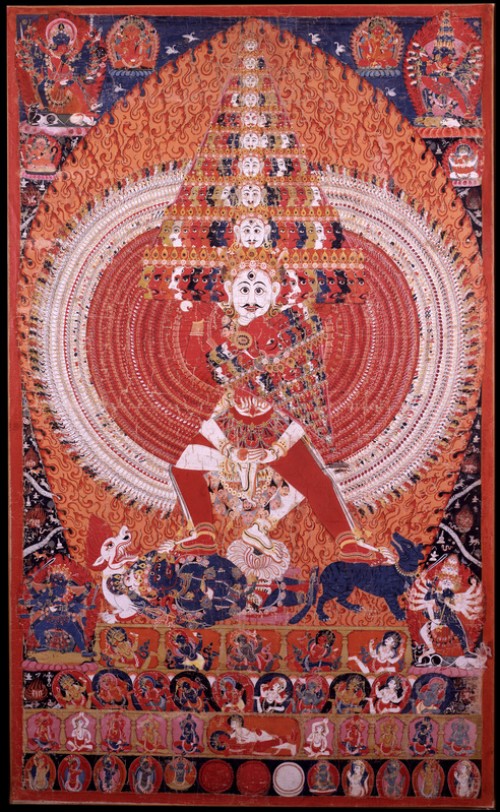
This time of year, thoughts of love, tenderness, and devotion are in the air!
Valentine’s Day is the perfect time to highlight objects from the Rubin Museum collection that feature couples or the themes of devotion and love. Enjoy this selection of paintings and sculptures that illustrate the timeless, enduring power that love inspires.
The Enchanting Red Tara

The Tibetan goddess Kurukulla, also known as Red Tara, is renowned for her powers of enchantment. She may be called upon to bewitch or subdue humans and demons alike. She typically holds a bow and arrow, similar to Cupid or Eros in Western mythology. If her mantra is repeated ten thousand times, it is said to bring about all of one’s desires.
Kurukulla is shown here in an eighteenth-century painting and is depicted in her signature red, the symbolic color of power and seduction.

The Perfect Couple

Of the many Shiva themes depicted in Nepalese sculpture, the most popular features the divine couple Shiva and Parvati. In Hinduism, Shiva and Parvati represent the ideal male-female relationship. Their characteristic affection is evident in this sculpture: Shiva sits in a relaxed and playful posture, tenderly wrapping his arm around Parvati’s waist as she passes an adoring glance at her partner. Together they form the “marriage” pose, which conveys the ease, intimacy, and strength of their powerful bond.
This sculpture will be on view in the upcoming exhibition Genesis Breyer P-Orridge: Try to Altar Everything (March 11-August 1, 2016).
The Passionate Lovers

In this stunning painting of the Hindu god Shiva and his consort, the cosmic quality of the couple is expressed through the painting’s transfixing and graphically striking composition. The female consort, embraced by Shiva, is in complete harmony with her partner and appears to almost blend into his form completely. The couple dances atop a dais supported by the lesser Hindu gods within an aureole of fire, surrounded by charnel ground scenes and other manifestations of the great god Shiva.
This painting will be on view in the upcoming exhibition, Nepalese Seasons: Rain and Ritual (May 6, 2016 – March 27, 2017).
The Lone Beauty

Beauty is in the eye of the beholder. This last object illustrates that sometimes we fall in love with artworks that others pass over without a second glance.
Rubin Museum of Art co-founder Donald Rubin purchased this Bodhisattva statue at an auction in 2003, despite the severe damage inflicted on the sculpture during China’s Cultural Revolution (1966″“1976). Regardless of the object’s battle wounds, which include several prominent bullet holes in the statue’s torso, Mr. Rubin fell in love with the enduring elegance and beauty of the image and acquired it for the Museum’s permanent collection.
The 12th century statue is currently on view in the Gateway to Himalayan Art exhibition, and remains a favorite of Mr. Rubin to this day.
Need more love in your life? On February 17, join the Rubin Museum for a special evening that explores the many facets of love.
At 7pm, Biological anthropologist Helen Fisher, author of Anatomy of Love: A Natural History of Mating, Marriage, and Why We Stray, explores the post-Valentine’s Day blues on-stage with the philosopher Simon Critchley.
Before the talk program, catch a special 6pm tour: “Tantric Union: It’s Not What You Think,” where you’ll discover more displays of love and devotion in our galleries.
Learn more about Brainwave 2016: Emotion.

